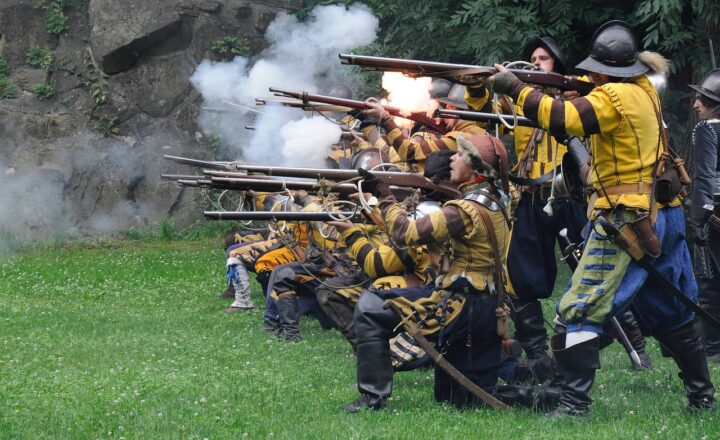The CIA’s ‘Heart Attack Gun’ and Other Alleged Assassination Tools
November 15, 2024

The Cold War was a time of shadowy dealings and clandestine operations, where intelligence agencies around the world vied for dominance using various methods, including alleged assassination tools. Among these, the CIA’s infamous ‘Heart Attack Gun’ stands out. This article delves deep into this mysterious device and other alleged tools of assassination attributed to the CIA, exploring their origins, functionalities, and the chilling implications they carry for national security and human rights.
1. The Cold War Context: A Brief Overview
To understand the significance of the CIA’s ‘Heart Attack Gun,’ it is essential to grasp the geopolitical landscape of the Cold War era. The rivalry between the United States and the Soviet Union created an environment where espionage, covert operations, and sometimes lethal measures became common practice. The CIA, tasked with international intelligence gathering and covert operations, often found itself navigating a treacherous path of moral ambiguity.
2. The Heart Attack Gun: Functionality and Purpose
The Heart Attack Gun is said to be a device developed during the 1970s, designed specifically for targeted killings. According to reports, it operated by injecting a specially formulated toxin into a victim’s body, ultimately causing a heart attack without any visible marks or evidence of foul play.
How It Supposedly Works
– **Design and Mechanics:** The gun was purportedly small, resembling a conventional firearm, but it was equipped with specialized, non-lethal projectiles containing a toxin. When fired, the projectile would penetrate the skin, delivering the toxin directly into the bloodstream.
– **The Toxin:** While specifics remain elusive, it is speculated that the toxin utilized could induce cardiac arrest, mimicking natural causes of death. This would leave no traceable evidence, making it ideal for covert operations.
The implications of such a device are profound. If true, the Heart Attack Gun represents the darker side of intelligence operations: a means to eliminate targets while maintaining plausible deniability.
3. Other Alleged CIA Assassination Tools
The Heart Attack Gun may be the most notorious, but it is not the only purported assassination tool developed by the CIA. Several other devices and methods have been alleged, showcasing the agency’s creative and often disturbing approach to removing targets.
2.1. Poisoned Umbrella
A famous story involves the use of an umbrella modified to deliver a deadly toxin. This device, used in the assassination of Bulgarian dissident Georgi Markov in 1978, showcased the ingenuity—and malevolence—of intelligence operatives. The lethal pellet was concealed in the tip of the umbrella, allowing for a stealthy approach and delivery.
2.2. Exploding Cigar
Another infamous assassination method was the exploding cigar. The CIA allegedly devised a plan to assassinate Fidel Castro using a cigar rigged with explosives. Although ultimately unsuccessful, the assassination plots targeting the Cuban leader highlight the lengths to which the agency was willing to go.
2.3. LSD and Mind Control
While not a physical assassination tool, Project MKUltra involved the use of LSD and other drugs in attempts to create ‘mind-controlled’ agents. The FBI conducted numerous experiments to manipulate behavior, with the frightening possibility that such tactics could lead to unknowing assassins.
The sinister creativity with which the CIA approached assassination is a stark reminder of the ethical boundaries often crossed in pursuit of national security.
4. Ethical Implications and Human Rights Concerns
The existence of tools like the Heart Attack Gun raises significant ethical questions. Governments are tasked with ensuring the safety and well-being of their citizens, yet clandestine operations often undermine transparency and accountability.
– **Legality of Targeted Killings:** The legality of extrajudicial killings, especially using covert tactics, is a contentious issue. International law generally condemns assassination, raising concerns about sovereignty and human rights violations.
– **The Risk of Abuse:** The potential for misuse of such tools is alarming. If a government possesses the capability to kill secretly, what protections exist for targeted individuals? The lines can easily blur between legitimate threats and political dissenters.
Discussions around assassination tools remind us of the weighty responsibility resting on intelligence agencies and the governments that oversee them.
5. The Legacy of CIA’s Alleged Assassination Tools
While the Heart Attack Gun and its counterparts may seem like relics of a bygone era, their legacy continues to resonate. As technology evolves, so does the potential for innovation in the field of covert operations. Advanced technology and drones may have replaced the more rudimentary assassination tools of the past, but the principles of stealth and deniability remain.
Governments worldwide grapple with finding a balance between national security and ethical governance, making discussions around these tools increasingly relevant.
Conclusion
The CIA’s ‘Heart Attack Gun’ and other alleged assassination tools symbolize the darker aspects of intelligence work during the Cold War and beyond. As we reflect on these tools, we must consider the ethical ramifications of extrajudicial killings.
In an age where information is rapidly disseminated and governmental actions face heightened scrutiny, the need for transparency, accountability, and respect for human rights has never been more critical. As we look forward, it is essential to consider how the lessons learned from past covert operations can inform current practices, ensuring that national security efforts do not come at the expense of fundamental human values.







